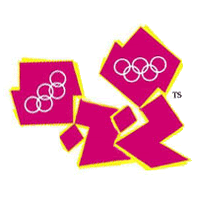This is the 24th installment of my weekly column for Mint, Thinking it Through.
As the first Test between India and England moved towards a finish earlier this week, one of my friends announced that he was singing Raga Malhar. This is a legendary raga that is supposed to draw rain from the sky. And indeed, rain fell. If causation could be established, my friend would be a national hero, for millions wanted precipitation.
Like most Indian men, I’m crazy about cricket. Like unrequited love, this passion often seems futile and self-defeating. It’s also mysterious. Why do we invest so much time and energy into following this sport and no other? Why is it the only sport that Indians excel at (relative to others, of course)? In a globalized world, can cricket survive?
Cricket is unique among sports in the amount of time it demands from its followers. In no other sport is a match played over five days. Even one-day cricket requires up to six times the investment a game of football needs. Given the amount of cricket played these days, to follow India’s international matches could take up the productive hours of up to three months of your year. Over a lifetime, if you live till 88, that could be 22 years of watching 22 men run around in flannels or pajamas. Are we crazy?
Until a decade-and-a-half ago, Indians had the time. In the pre-liberalized years, what options did we have for entertaining ourselves? Cricket and Bollywood—whose films were longer than the Western norm, you will notice—were all that Indians had for entertainment. Television was state-run crap (note the tautology), the Internet didn’t exist, there were few malls to hang out at, and so on.
Two interesting trends began in the 1990s, when we began to globalize and satellite TV spread across the country. One, fewer people in the big cities played cricket seriously. Kids in Mumbai and Delhi had many more options for their time, and a young man in Thane now had better things to do than rush off to Shivaji Park at 6 am for nets. The decline of cricket in Mumbai was a natural consequence.
Two, kids in the small towns, who didn’t have so many ways of entertaining themselves, were exposed to the nuances of the game via satellite television, where the best commentators shared their gyan on matches across the world. Their opportunities expanded as these towns became more prosperous. The result of this is the deluge of talented players from the smaller towns over the last few years.
My guess is that viewership for cricket follows the same patterns. People in bigger cities have less free time and more to do in it, a phenomenon that is bound to spread to smaller centres. Eventually, as cricket has declined in Mumbai, it might decline in India as well.
But there is a counterpoint to this. Sport is more than pastime or entertainment—it is also a means of validating national pride. We will always follow a sport in which we excel. And although Indian cricket may seem to be in decline—I shudder to think what the team will look like after Rahul Dravid and Sachin Tendulkar retire —we will always do better at cricket than any other sport.
Why are we so good at cricket, to begin with? Part of why we took up the sport is historical circumstance, but leave that aside. The main reason why cricket is suited to Indians, and one that many will find politically incorrect, is genes. People across the world come from different genetic stocks, and are constrained by biology. This is reflected in sports. The odds will always be against a white or brown man winning the 100m sprint at the Olympics, and Africans will always do better than Asians in long-distance running.
Indians, I believe, are genetically disadvantaged when it comes to sports in which pure strength, speed or endurance play a decisive role. We tend to do well only in sports that place a premium on skill—cricket is a classic example. Even within cricket, we’ve been more famous for our batsmen than our bowlers, and for our spinners than our fast bowlers. Even our fast bowlers rely more on skill—swinging and seaming the ball—than on sheer pace, where fast-twitch muscles come into play. Of course, there are variations within the country, where many different genetic stocks exist.
Indeed, this is why Indians declined in hockey, as astroturf reduced the premium placed on pure skill. Ditto tennis, where the sublime skills of Ramesh Krishnan would be useless in this era of the power game. In cricket, even though the speed and fitness required at the highest level of the game has increased, it is unlikely to go beyond the natural capacity of Indians.
And thus, by biology and circumstance feeding on each other, we are bound to cricket. I don’t bemoan this —if Rahul Dravid can get his mojo back, and play as he did when he was last in England, it will all seem worthwhile again. And my friend won’t have to sing Raga Malhar.
* * *
You can browse through all my columns for Mint in my Thinking it Through archives.
Also check out an essay in which I’d touched on this subject, “Do We Really Love Cricket?”


